Ask Ethan: Why are spiral galaxies so loosely twisted?

Think of the largest night sky objects you have seen. Yes, of course, they are completely different - dying stars, supernova remnants, nebulae forming stars and star clusters, both old and new - but nothing compares to the beauty of spiral galaxies. Containing from billions to trillions of stars, these “island universes” exhibit a unique structure. The structure is rather mysterious, if you think about it - as reader Greg Rogers thought:
What always amazed me about spiral galaxies was their sleeves wrapped around them for no more than half of the galaxy. As the outer part revolves around the nucleus more slowly, one would expect to meet galaxies, the sleeves of which are wrapped many times around the nucleus. Is the Universe not old enough for so twisted galaxies to appear in it?
')
Consider all sorts of spiral galaxies, but all of them will have a similar visible structure.
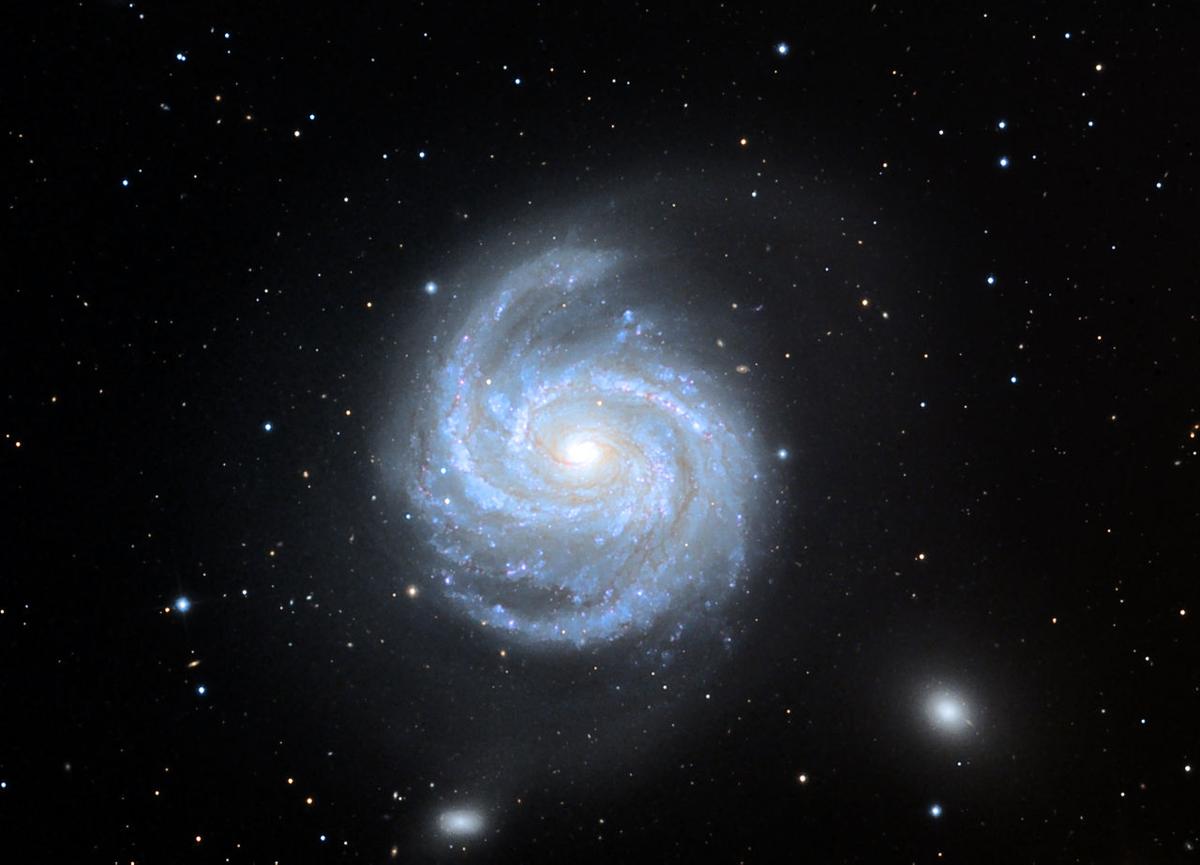
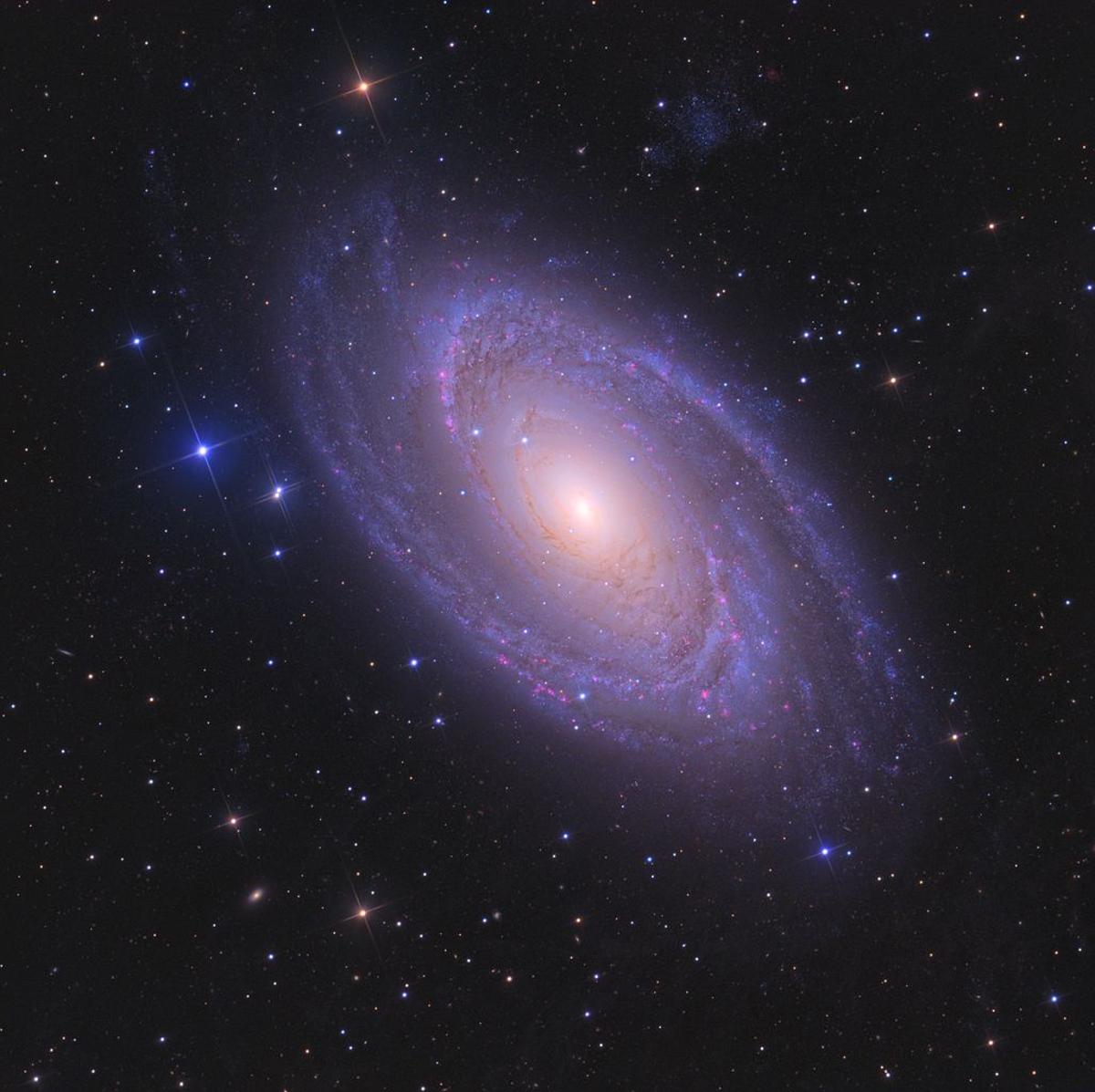
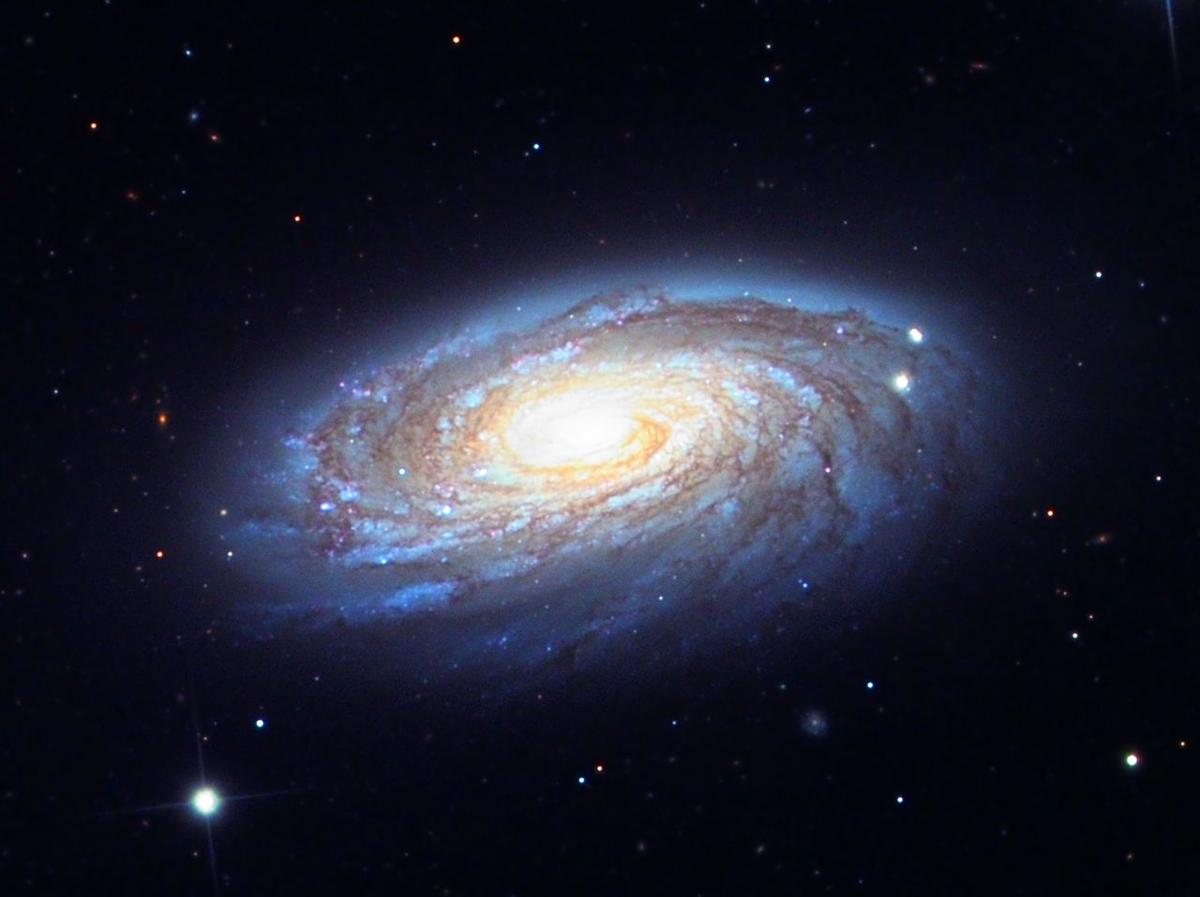
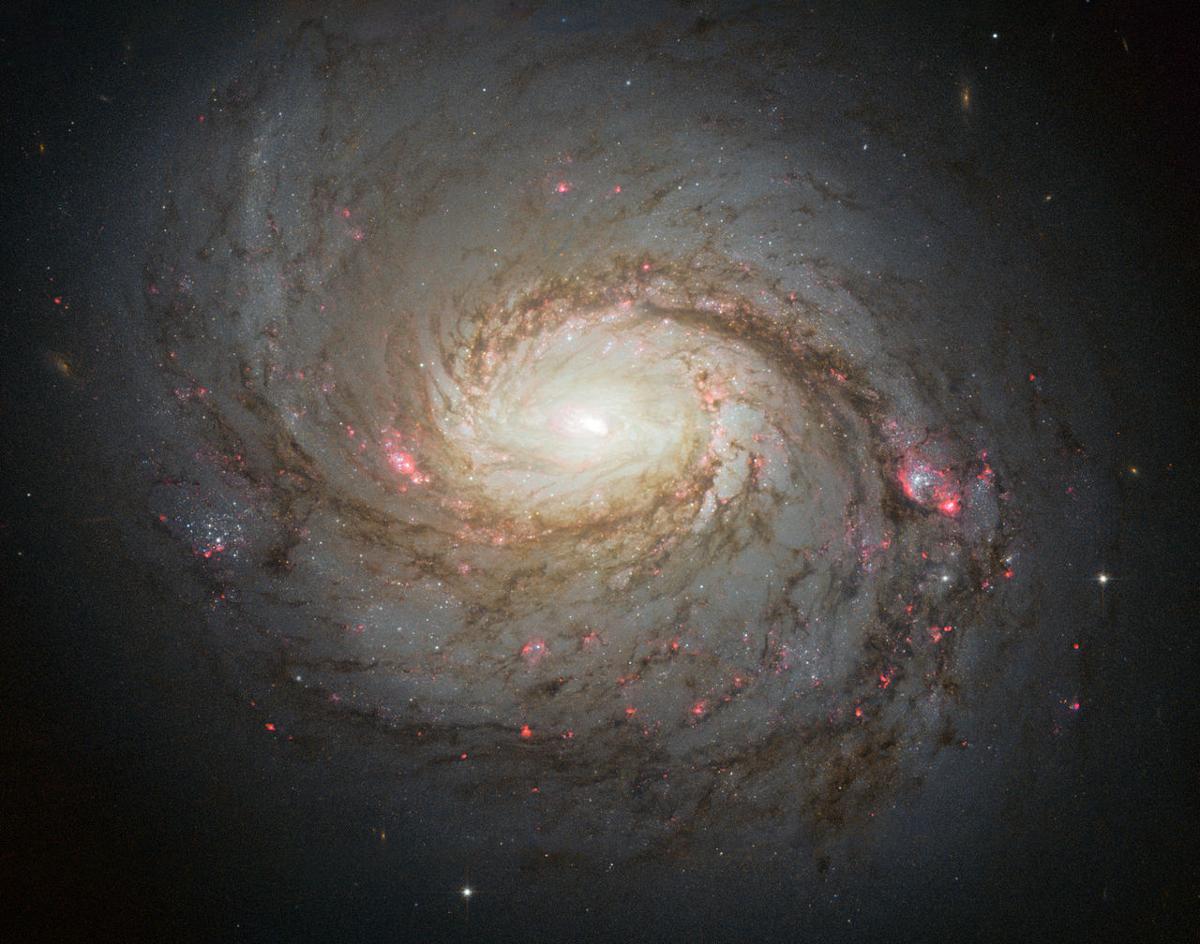



Several spiral arms — usually from two to four — wound around the galaxy as they move away from the center, extend outward from the central core. One of the fantastic discoveries of the 1970s, which came into conflict with expectations, was that the speed of stars in their orbits around the galaxy does not decrease as they move away from the nucleus, just as happens with planets in the solar system that travel in orbits slower the farther they are from the center. The speed of rotation of stars remains constant - this is one more way to say that the curves of rotation of galaxies have a flat profile.

We measured this by studying the galaxies located to us by an edge, and counting what red or blue displacement the stars show in relation to their distance from the center of the galaxy. And although the speeds of individual stars practically do not change, the star, located two times farther from the center, revolves around it, two times slower, and the star, located ten times further, ten times slower.
Armed with this, one can calculate that for a galaxy of the type of our Milky Way, the Sun takes 220 million years to complete one revolution around the galaxy. Since we are located about 26,000 light years from the center of the galaxy, our position is a little closer than half the way from the center to the outskirts. This means that since our galaxy is about 12 billion years old, external stars should have made a full turn only 25 times. The stars, located just like the Sun, made 54 turns. The stars within a circle with a radius of 10,000 light years have already completed more than 100 revolutions. In other words, it can be expected that the galaxies twist over time, as shown in the video below.
But as the photos of galaxies show, they do not twist many times. In most cases, the sleeves do not wrap around the galaxy even once! When this property of galaxies became clear for the first time, it meant at least the following: these spiral arms were immaterial, this is just an appearance. And this is so, regardless of whether the galaxies are isolated or not. But there is something else, if you look closely.
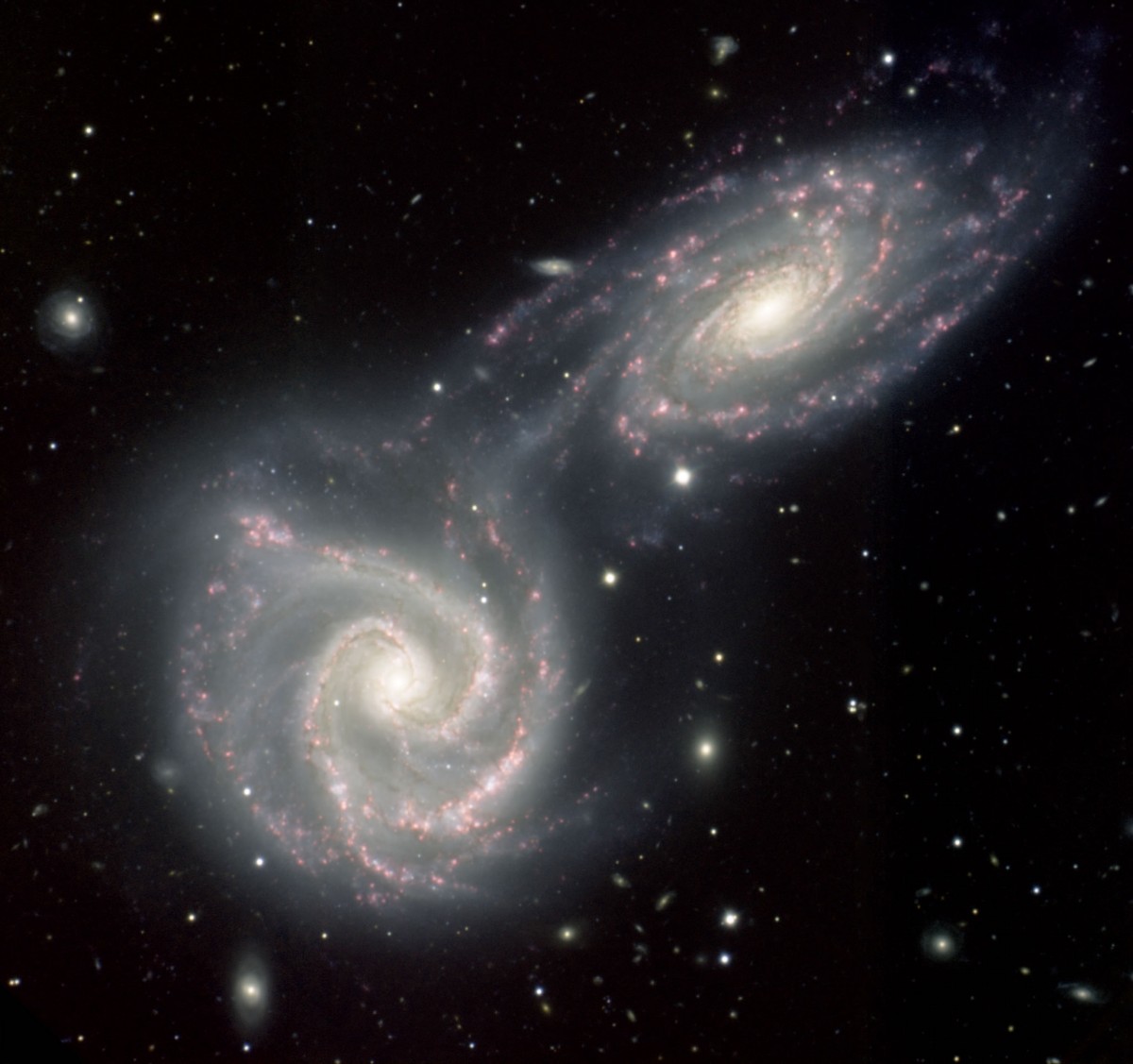
Noticed pink spots along the sleeves? They appear where active regions of the formation of new stars are present. The pink dot is a surplus of emitted light at a well-defined wavelength: 656.3 nm. This radiation occurs when new stars burn brightly enough to ionize gases, and then, when electrons are reunited with protons, the newly formed hydrogen atoms emit light at a certain frequency, including the one that makes these regions pink.
This tells us that these spiral arms consist of regions in which the density of the material is higher than in other parts of the galaxy, and that the stars freely come in and out of these arms over time.
The idea that explains this has existed since 1964, and is known as the theory of density waves . The theory states that the sleeves stay in the same places over time, just as traffic jams remain in the same places. Separate objects (stars in the galaxy, cars on the road) can move through them, but about the same number of objects always remains in a “traffic jam” at any moment. Because of this, the location of the compacted areas remains unchanged.
The physics of the process is simple: the stars in certain regions create the gravitational forces we are used to, and it is they who retain the spiral shape. In other words, if we start from a region with a higher gas density, and allow our disk to rotate, we will get an initial set of regions where the stars are first formed: proto-sleeves. With the evolution of the galaxy, these sleeves - and regions of increased density - are preserved only due to the effects of gravity.
Surprisingly, this effect works as well as in the presence of dark matter surrounding the galaxy in the form of a giant halo, and in its absence.
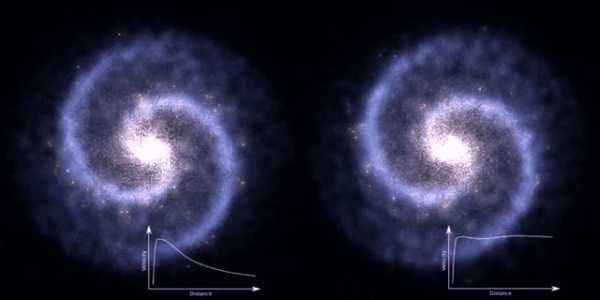
On the left - a galaxy without dark matter, on the right - with dark matter
And although the assumptions of Greg's question were wrong, since the outer stars of the galaxy are moving at the same speed as the inner ones, the sleeves never really turn around, regardless of the age of the galaxy, simply because of the physics of the galaxy itself. Like traffic jams, the stars, gas and dust appearing in spiral arms at any moment in time are in a denser environment, and when they escape from there, the distance from them to other stars increases - our Sun is in this position today.
Source: https://habr.com/ru/post/400801/
All Articles